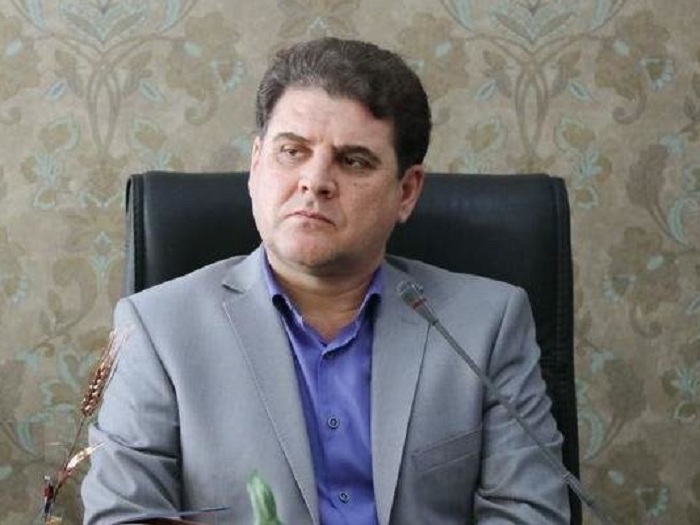Exit of stagnant mines in Kerman from uncertainty

Governor of Kerman: Unfortunately, during the past years, several licenses have been registered in the names of individuals and companies that have not had any profit so far and the mines have remained frozen.
According to the International Iranian Stone Exhibition, Kerman province is known as the paradise of Iranian mines. Existence of mines such as copper in Rafsanjan, Shahrbabak, coal in Zarand, Kuhbanan and Ravar Sangahan in Sirjan and Zarand chromite in Esfahan, Faryab and Soghan and titanium in the south of the province, Gol Gohar steel, Sarcheshmeh copper and large mines identified in the east The employment field of Kerman province and its significant share in GDP has become. But in the meantime, there are smaller mines through which many permits have been issued to individuals in recent years; Not only has it remained silent, but its stagnation has deprived others of the opportunity to join the cycle of production and job creation. This has led the authorities to adopt a new policy for the exploitation and activation of these mines, so that the potential of this paradise may be further revealed.
The governor of Kerman said: Kerman province is very important in terms of having mines. Large complexes such as Gol Gohar Steel, Sarcheshmeh Copper and other mines that play a major role in providing the country's mineral reserves.
Ali Zainavand added: "The problem that exists and is not unique to this province is that in Kerman province, many of its mineral areas have been registered by individuals or even Imidro in the name of an individual or a company, but are currently inactive, so because When these inactive mines enter the production cycle, the Minister of Silence, with the approach of organizing these mines, has adopted the policy of changing the transfer of licenses and permits issued in the name of competent persons.
He said: "Unfortunately, in the past years, several licenses have been registered in the name of individuals and companies that have no profit so far and the mines have remained frozen. Small mines are changing. This is done after separating the inactive mines and revoking the licenses of individuals within the legal framework and changing it to qualified individuals so that these mines can also enter the production cycle.
He said that there are many small mines including iron ore, copper, chromite, etc. in the province that both investors and applicants have announced their readiness to activate them, noting that in this regard, the Ministry of Silence was supposed to give authority to the governorates. Assign, that there are legal issues that need to be addressed. Although no official notification has been issued yet, it has been suggested that this delegation will be delegated if the provinces accept this responsibility.
The governor of Kerman added: I announced that we are ready to do this as a pilot province. Because with this delegation, we will be able to use many stagnant and inactive mines, and not only can we provide employment for many people, but also the production of minerals will be formed by processing the mines of the province.
Zinivand stated: In the south of Kerman province, where less attention is paid to industry and mining, there are several rich mines that are inactive, and by activating them, it is possible to increase the extraction capacity.
In response to whether the presence of Corona disease has affected the production capacity of mines and the employment of miners or not, he said: There is no problem in the active mines of the province and the mines and industrial units of the province are operating with good capacity and the presence of this disease is an obstacle. It has not been the work of these collections.
Muslim Moroji, Director General of Industry in the south of the province, also said: In the south of Kerman province, 42 minerals are extracted from minerals such as chromite, titanium, copper and… and so far 467 licenses have been issued for the extraction of these minerals.
He pointed out that the mines in the south of Kerman province are small-scale and there are no large-scale mines in this area, he added: Activation of small-scale mines is on the agenda so far 51 mining licenses have been issued in this field and is expected by the end of this In this section to increase to one thousand people.
Earlier, the head of the Industry, Mining and Trade Organization of Kerman province had also said: the Mines Council of this province determines the area of passive mines with valid and invalid and auctions.
He stated: All mining operators in Kerman province should seek to activate their mines or report unforeseen problems beyond their means; Otherwise, the Industry, Mining and Trade Organization of Kerman Province, through the Council of Mines, will determine the task of these mines and create infrastructure for new investors to enter, because action for the growth and development of Kerman Province is one of the province's policies and activities.
Referring to the existence of 2,000 auction areas in Kerman province, he said: "We should take action to activate about 200 mines in the province or determine their duties and pay their government salaries."
He continued: The province's mines account for 36.2% of the country's GDP, about 6,136 licenses have been issued in the province, of which 2,330 (38%) are active and the rest are inactive. A solution must be found for them.
Hosseini Nejad pointed out: 2,655 areas are currently blocked due to the opposition of the relevant agencies or by the Block Industry Organization, which includes 62%.
He said that more than 92 million tons of minerals are extracted annually in the province, noting that 99.6% of the province's minerals are in four minerals: copper, iron, coal and chromite, and 83.5% of the reserves discovered in The province, which has more than five billion 800 million tons, also includes these four minerals.
* IRNA










